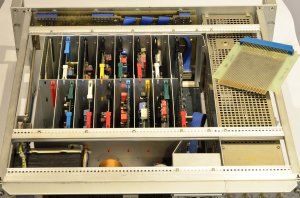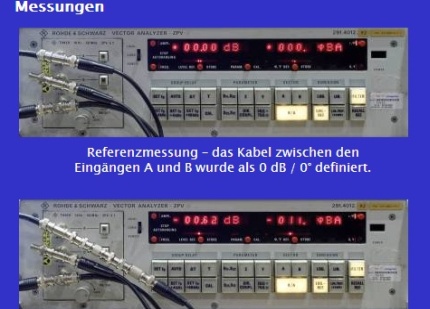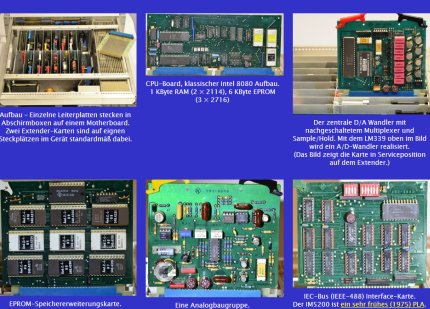Rohde & Schwarz ZPV Vector Voltmeter
The Rohde & Schwarz ZPV is a Vector Analyzer aka Vector Voltmeter. It measures voltages/voltage ratios and phase relationships of two AC inputs.
Additionally, the unit can calculate group delays, and through an add-on module it can take automated measurements of s-parameters under computer control.
The base unit contains the control processor (Intel 8080, 1 kByte RAM) and low frequency (20 kHz) IF signal processing. The modular LF/HF input section ("tuner") mixes the input signals to the 20 kHz intermediate frequency. Several tuner modules are available, covering input frequencies from 10 Hz to 2 GHz.
HPIB (IEEE-488) control is standard on the unit. True to the period, the ZPV offers analog recorder outputs. One set is generated from the analog circuits (to be used for sweeps), another by the processor through D/A.
Rear view. Twp 20 kHz IF outputs, polar sweep outputs, polar/cartesian recorder outputs. Separate A/D input.
The Operator's Manual for the basic ZPV unit (PDF, 3MB) can be downloaded from KO4BB's site.
The ZPV is of a rather ample late-1970s design. Judging by the IC date codes, the unit pictured here was fabricated in the 2nd half of the year 1980.
The main controls are large, heavy-duty function keys, lit by light bulbs (not LEDs) to indicate the current operating mode. The display consists of two fields, each having four numeric digits (using nice TIL311 numeric dot matrix displays) and three letters/symbols (5×7 matrix), plus a trend bargraph.
Through the dual displays, the ZPV can indicate both components of the complex unit being measured, either in polar coordinates (voltage or ratio and phase) or in cartesian coordinates (real and imaginary), at the operator's choice of linear (mV) or logarithmic (dBm) units, absolute values or relative to a selectable reference.




